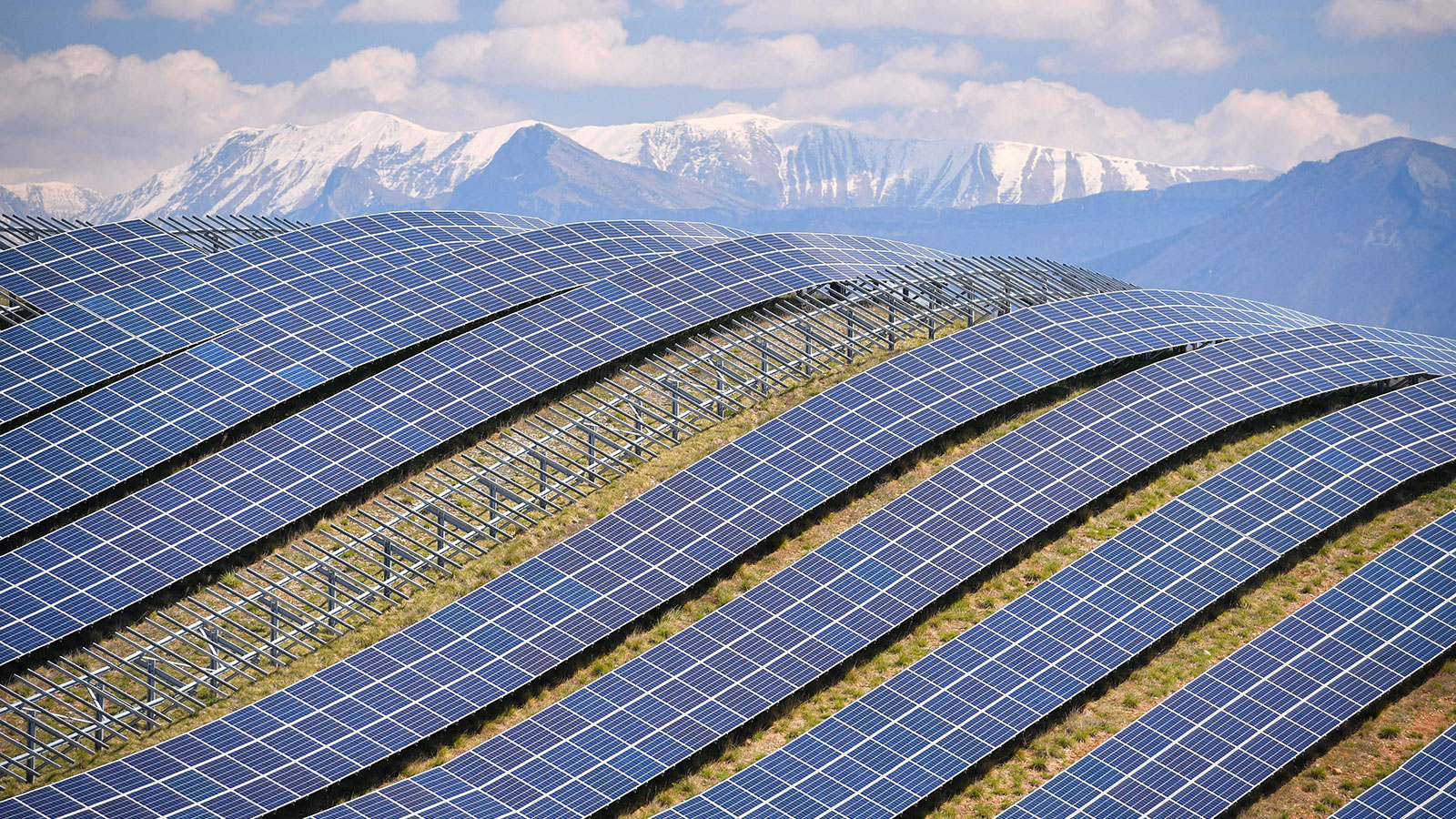The reduction in driving, flying, and industrial activity due to the COVID-19 pandemic has cleared the air in typically smog-choked cities all over the world, inspiring awe in residents who are seeing more blue skies and starry nights than ever before. While the drop in pollution doesn’t necessarily mean we’re making progress in mitigating climate change, it’s now proving to be a boon for solar energy generation.
Pollution blocks solar radiation, and the fine particles spat out during combustion can settle on the surface of solar panels, reducing their efficiency. Smog-free skies, along with a lucky combination of sunny days and cooler temperatures, which boost panel efficiency, have helped solar panels break records in the U.K., Germany, and Spain this spring. The trend points to the potential for a positive (and hopeful) feedback loop — as polluting energy sources are replaced by solar panels, those solar panels will be able to generate more energy.
In Germany, a record that was set in March was broken again on April 20, when solar generated 40 percent of the country’s electricity, while coal and nuclear power generated just 22 percent. It’s actually not unusual to see solar generation records this time of year, when new panels installed in the winter get their first time to shine in the spring weather. While the added capacity explains some of solar’s grid takeover, the drop in electricity demand right now due to the pandemic has also inflated its proportion in the total mix.
In the U.K., record solar power generation also helped coal plants set a major record, but the opposite kind. The entire U.K. energy system ran with zero coal-fired power plant generation for more than 18 days, the longest streak in more than a century. Britain has just four remaining coal plants, all of which are scheduled to close by 2025.
The COVID-19 pandemic has touched renewable energy in myriad ways, and not all good. In early March, it became clear that the virus was disrupting supply chains and financing, which will delay new solar and wind projects in the U.S. For the first time in decades, we probably won’t see increased growth in U.S. renewable energy capacity this year. But even if growth is slower, a new report from the International Energy Agency released Thursday predicts that renewables will likely be the only energy sector to see any growth in demand this year, and that coal is set for the largest decline in demand since World War II.
While it’s still hard to say how the industry will emerge from the rubble of a massive recession — especially as efforts to help it domestically have been a nonstarter in Congress — a new study by clean energy research firm BloombergNEF paints an optimistic picture that the renewable energy takeover will continue on a global scale. The financial research firm found that utility-scale solar farms and onshore wind farms now offer the cheapest source of electricity for about two-thirds of the world’s population.
The study finds that falling costs, more efficient technology, and government support in some parts of the world have fostered larger renewable power plants, with the average wind farm now double the size it was four years ago. The larger the plant, the lower the cost of generation. The price of electricity from onshore wind farms dropped 9 percent since mid-2019, and solar electricity prices likewise declined 4 percent.
The pandemic has depressed the price of coal and natural gas, so it remains to be seen whether and how quickly wind and solar will push them off the grid. But Tifenn Brandily, an analyst at BNEF, said in a statement that solar and wind prices haven’t hit the floor yet. “There are plenty of innovations in the pipeline that will drive down costs further,” he said.



